Anthem Room Correction and Martin Logan Renaissance ESL 15A
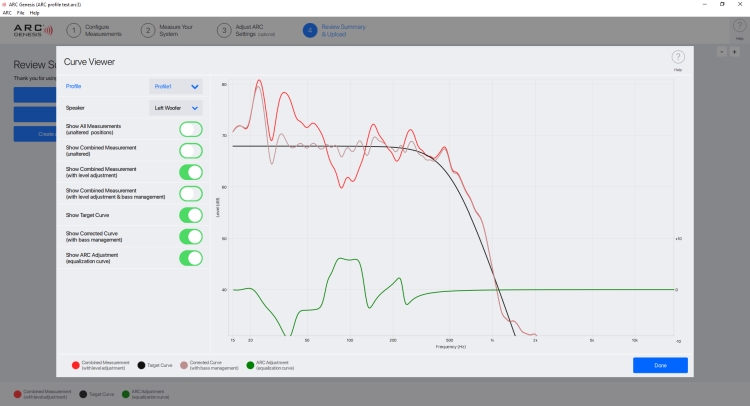
Perfect Bass Kit supplied by LookenListen, distributor for the Benelux
For the longest time, I’ve had mixed results when using Room Correction software. Of course, most of the time this meant using an extra digital device with analog inputs and outputs and no matter how good the built-in A-D and D-A converters are, this process is not likely to be 100% transparent. Things are different when the correction software is an inherent part of the hardware design of an existing component such as the Anthem STR preamp. In that review, I have detailed the differences in sound between the fully analog path and the path following A-D and D-A conversion as well as the switching on and off of the ARC process. While the former had an impact on some aspects of the reproduction, the ARC process itself was actually transparent. And that brings us to the Martin Logan ESL 15A electrostatic loudspeakers. Their bass sections contain active amplification and use DSP by default and as such, uploading curves that have been optimized by Room Correction software should not have adverse effects. But here, the plot thickens. But before I dive into the precise effects, room-related issues, and solutions, let me explain some more about the Room Correction software at hand: ARC.
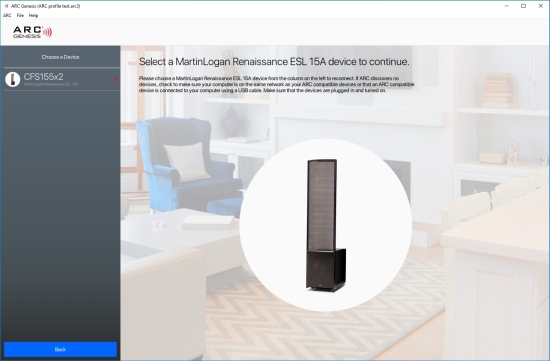
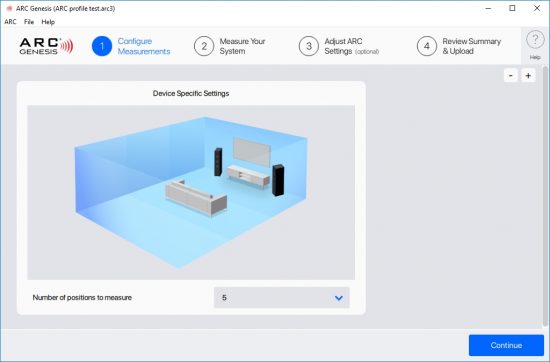
Above: ARC on Windows, below: ARC on iOS
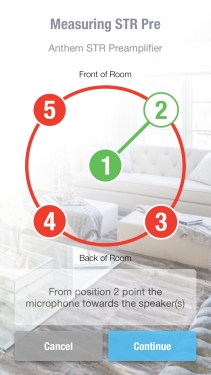
Anthem Room Correction
To use Anthem Room Correction (ARC) with Martin Logans, one needs to purchase a PBK (MartinLogan Perfect Bass Kit) consisting of a microphone with calibration file, a stand and all the required cables for 149 euros. The Martin Logan microphones are fully compatible with Anthem Room Correction for MartinLogan speakers and the ARC software can be freely downloaded from The Anthem website. Note that the software only works with Anthem-, Paradigm- & Martin Logan products that are PBK of ARC ready. For example, I tried using a MiniDSP Umik-1 but, alas, it was not recognized.
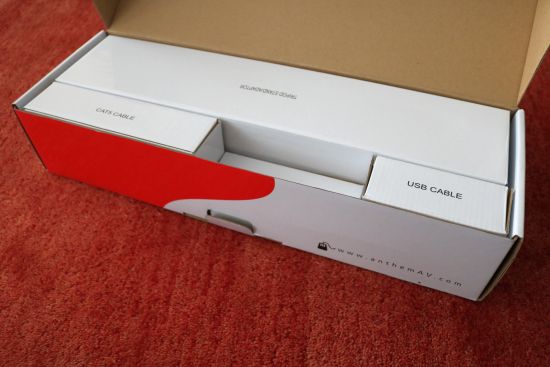
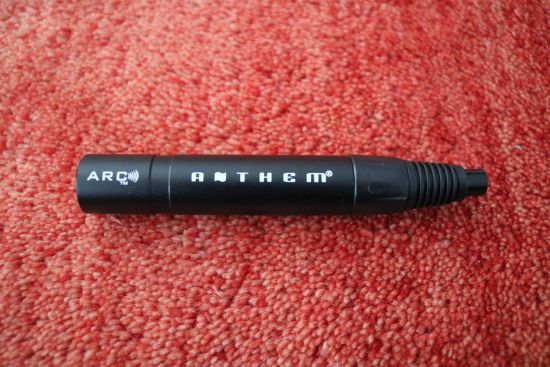
The software runs on Windows and Mac and also on Android and iOS, although the latter implementations either work only with the built-in (not calibrated-) microphone or require special USB adapters and offer less functionality than the desktop solutions. The measurement process is simple and painless and works by connecting the PBK microphone and one of the speakers via two USB cables to a computer and interconnecting the speakers using a LAN cable.
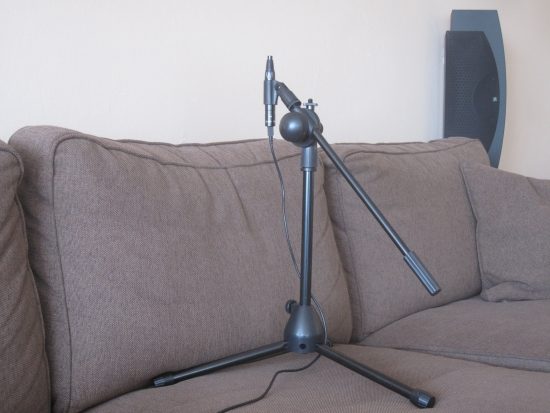
The software plays a number of frequency sweeps for each speaker and then calculates the optimum curves. These curves can either be manually adjusted using a range of settings or uploaded to the speakers as they are. After that, ARC can always be switched off and back on using a button on the rear of the speakers. There are two things to keep in mind. First, USB cables are limited to a certain length and this mandates the use of a laptop or a nearby desktop computer. Second, the effect cannot be heard (ARC won’t be active) until the USB cable has been pulled from the speaker.
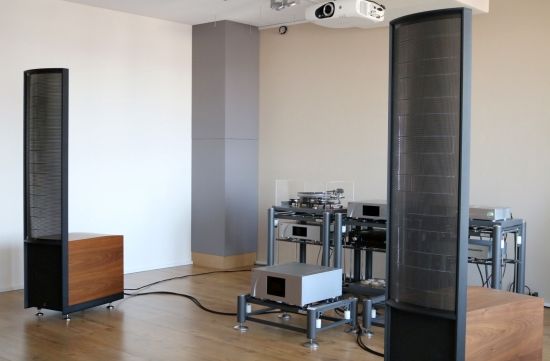
Above: clean setup with only the Logans in place
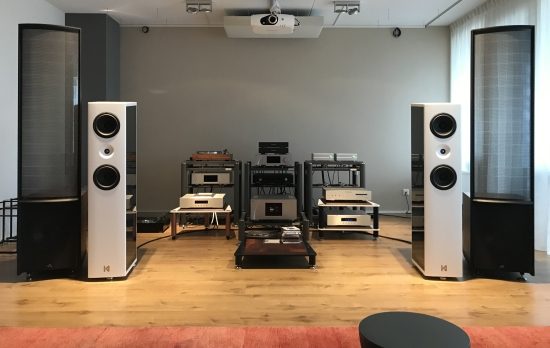
Above: Logans as well as Kroma Audio Carmens. Although this setup may seem cramped, the Kroma’s are almost in their ideal positions and the Logans are actually set up ideally. The Kromas can have wider soundstaging and become more transparent when set up ideally without the Logans but, still, they sound highly involving. Interestingly, the Logans’ performance is altered only moderately by the presence of the Kromas. The imaging perspective does change but this does not affect the soundstage size or the focus. Neither does it have any negative impact on the bass, rather the opposite, as the columns reduce the reflected HF energy from the Logans’ rear sides and also tame the standing wave between floor and ceiling. Interesting, isn’t it, how counter-intuitive things can sometimes work out in the wonderful world of audio?
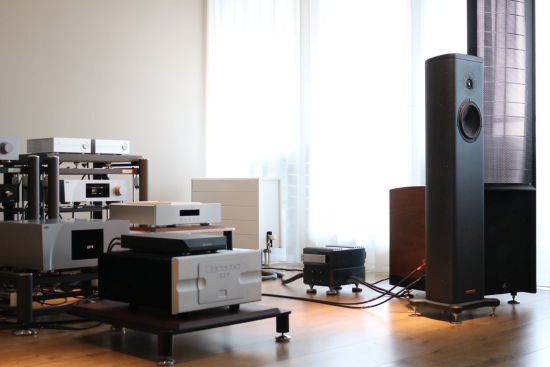
Above and below: Magico S1MkII’s positioned between the Logans. This is the setup that I used when performing the measurements and corrections for this article. The Magicos are relatively tiny resulting in a negligible impact on the sound. Fortunately, like the Kromas, the Magicos seem to be happy in these spots. I’m sure that they can sound even better when spaced a little wider apart and with the Logans out of the way but I love those panels with their big butts too much to even want to try this.
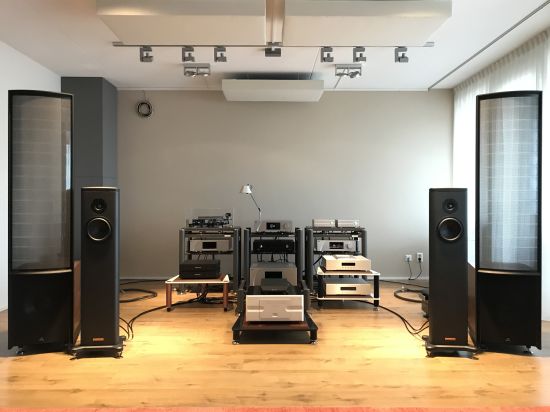
ARC is arguably most beneficial when the speakers are set up in non-ideal positions but even when the setup is as perfect as is possible, using ARC still results in very audible improvements, most notably an even more linear and cleaner bass. When I reviewed the ESL 11A’s, ARC indicated that there was a bump down below which can be flattened very effectively, but with that version of the software, I found the adjusted sound to be a little lean, even if it was more accurate. Re-adjusting the bass level on the rear of the speakers did not really make it better so, for that review, I chose to use the speakers with no correction. When I got the ESL 15A’s, they sounded so great with default settings that I did not feel the urge to use ARC.
ARC Genesis
Meanwhile, Anthem released ARC Genesis which is much-improved from the previous version. The new interface looks great and the software now offers many settings that can be used to further tweak the sound before or after the measurements. It was while using this version of the software that I was able to achieve an even better sound from my 15A’s but it did take me some time to make it work perfectly.
As with many rooms, my room has some resonances that work out differently for the left and right speaker but ARC can very effectively counteract these, resulting in a much more linear bass response from each speaker. Audibly, the ARC-corrected sound results in a faster and more nimble bass that is considerably more articulate and unveils overtones much more distinctly. A very welcome side effect of this is that individual instruments are also better separated and considerably easier to follow. While some upgrades have a subtle effect, these improvements are anything but. Actually, when switching back to the non-linearized sound it is baffling to realize how the comparatively blurry sound was interpreted as being great up until the ARC measurement process.
However, when playing a certain Janet Jackson track, I noticed that the lowest note of a repetitive riff was no longer audible. Not just softer than the higher ones but just completely absent. Moreover, as Anthem already warned for, with many tracks, the sound had also become leaner and less impactful. Sure enough, when switching off the ARC on the back of the speakers, the low note was back! The ESL15A’s extend to 22Hz -3dB which is considerably deeper than this particular note so it could not be a limitation of the speakers themselves. Now, I am aware of the commonly made mistake of misinterpreting an accurate bass for being too lean and that is not what was happening here. My speakers are positioned almost in the middle of the room and, if anything, my room is detracting bass energy, certainly not adding any. So, why would the corrected sound result in the loss of low notes?
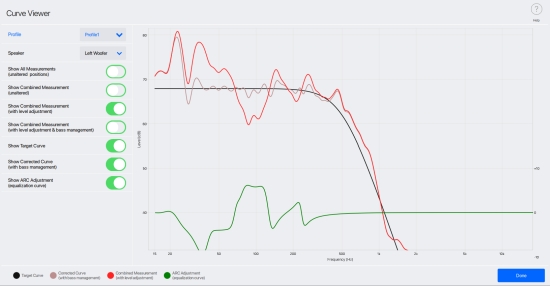
Above and below: Left and Right speaker ARC measurement results using the Curve Viewer section. Red = measured curve, Purple = corrected curve, Green = equalization curve.
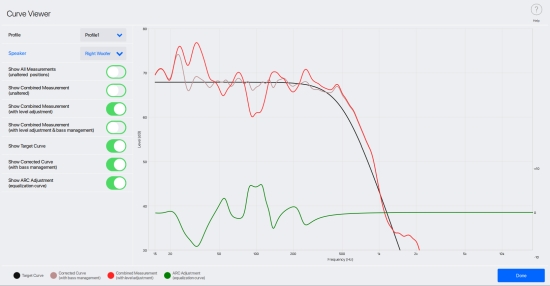
The answer to this is as annoying as it is interesting. When inspecting the measured curves for each speaker I noticed that in two bands below 100 Herz they had almost opposite behavior. Where one would spike up, the other would dip. Although one would expect this to not sound very good, the net result at the listening position is a seemingly linear bass all the way down to the deepest notes that my music collection contains.
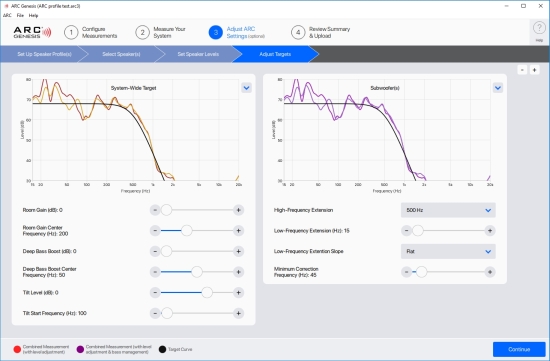
Above: optional ARC Settings
In an effort to find the precise point of the cutting off of the aforementioned note, I started moving up the “minimum correction frequency” in the ARC settings. Initially at 15Hz, I incremented it in steps of 5dB until I reached 40dB and the low note was back! 5 more Herz made it even fuller while another 5 more Herz did not help. I settled at 45Hz. This way, I could see that the left and right speaker had very different responses below that frequency but that they were still corrected for bumps and valleys above that.
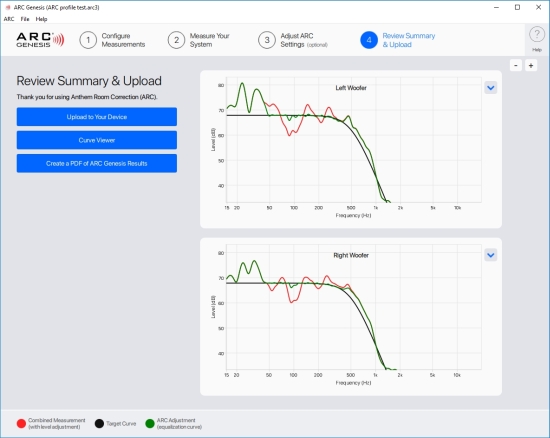
Above: ARC with minimum correction frequency at 45Hz, leaving the bumps below that untouched. These curves can be uploaded to the speakers with the click of a button.
With this setting, the sound was fabulous. Granted, there was slightly less clarity in the lowest bass compared to the full-range correction but at least all the bass notes were now played at full strength. Lacking specific measurement software I can only guess as to what causes this but the problem is probably two-fold. First, it is a fact that the left and right speaker have opposing behavior in the very low bass. Second, I know from experience that my room has some nulling at the listening position. Apparently, the discrepancy between the untreated left and right speakers is such that it counteracts the nulling at the listening position. That being the case, the ARC-corrected sound may make each individual speaker more linear but it cannot predict the combined effect of both speakers in my room. Thus, the corrected sound effectively allows the nulling to take place and in the process removing the lowest bass notes.
Conclusion
As this exercise shows, the measurements and auto-corrections that are done by ARC can make a profound impact on the quality of the bass. What’s more: even when the speakers have already been positioned ideally, the ARC results are still far from subtle. However, it remains important to assess the measured results and apply manual corrections where required. Fortunately, ARC Genesis provides all the handles to do this in a simple and intuitive manner. If you have a Martin Logan speaker or subwoofer, I strongly recommend the use of ARC software. You may need to purchase the Perfect Bass Kit but the ARC software can be downloaded for free.
External Links
Manufacturer: MartinLogan and Anthem
Distributor for the Benelux: Lookenlisten.nl

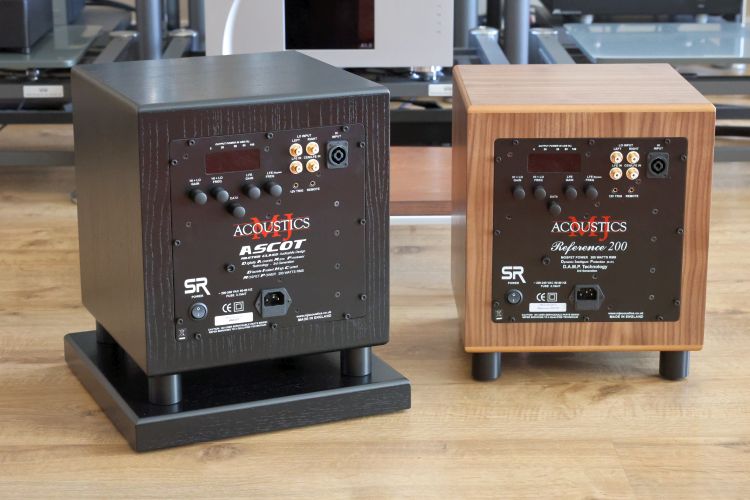
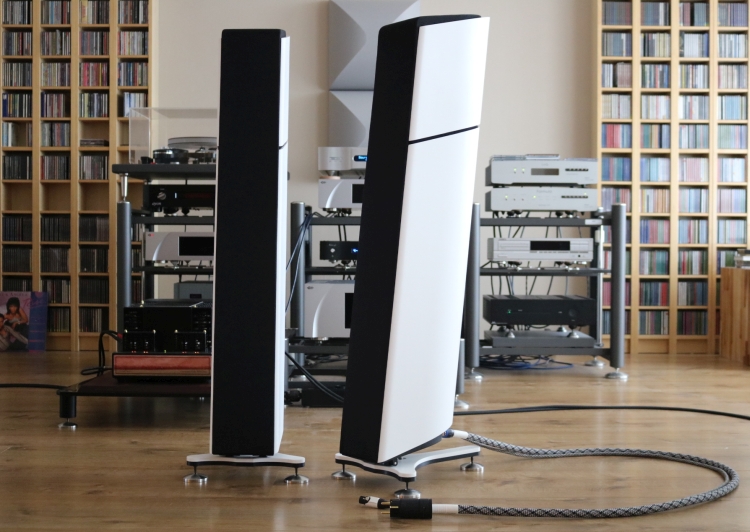

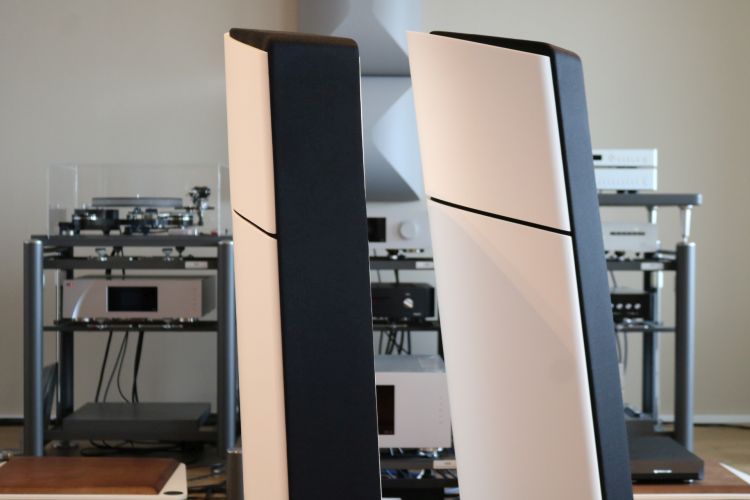
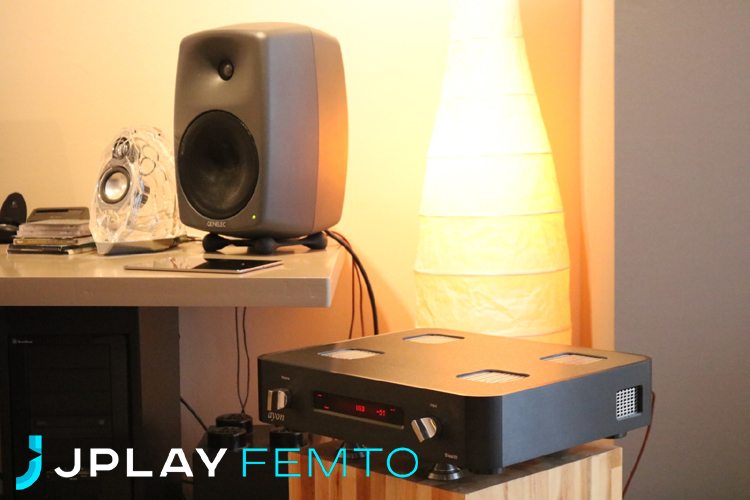
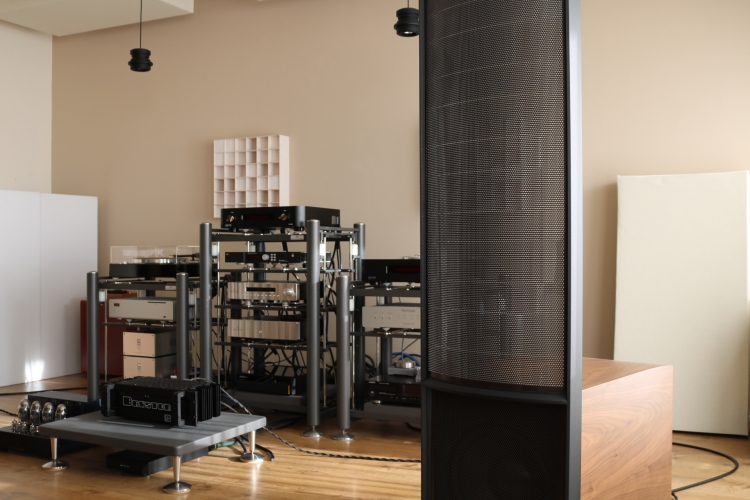
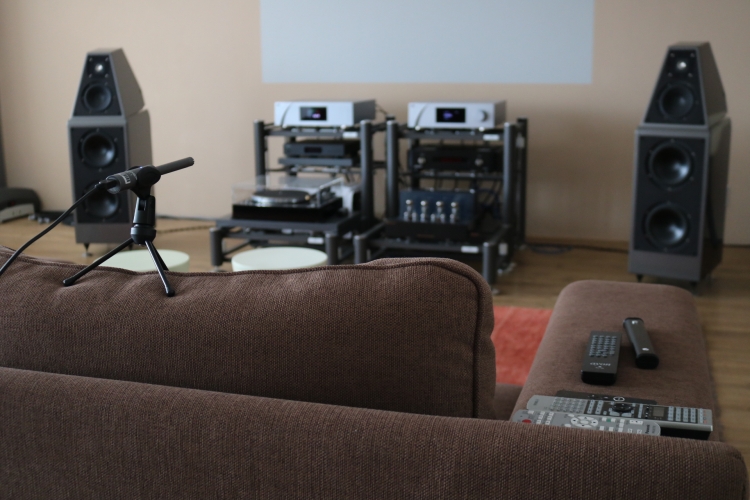
Hello,
I have Paradigm Persona 9H that uses the same Anthem Room Correction.
I played extensively with the ARC Genesis, and in the end I used the “Deep Bass Boost” to give me a more full and rounded bass.
I have to say after reading most of your posts (I’m interested in electrostats – mine are all JansZen based panels) I have not found another person I agree with on more points than ever!
I think you have traveled the same path in your search for audio perfection as I have (in a sense) once I heard what’s possible with electrostatic panels, I realized that anything less was suddenly not worth my time to even bother listening.
But what I found most incredible is how you reached the same conclusion with DSP and testing programs / mics / digital mixed analog effects. I thought I was the only one who was able to hear exactly how much sound is lost just by running analog into a DSP and how much of the realism and nuance is lost. Even without changing any settings, the sound is changed. Staying analog to the speakers has been the best sound possible. One thing I have found after a few years of testing was the need to find woofers that match up with the panels. I found many in many sizes and brands that can easily do this but the key to the smoothest transition is when using a 3 way active crossover but running it like a 2 way so you can utilize the all important overlap at the crossover point. I have 28 panels in use, the more panels the easier it is to achieve proper settings and reaching believable sound levels becomes effortless.
I tested my panels running full range with hundreds of sweeps using multiple programs and mic combinations till I finally found one that consistently gave exact results each time and every time. The thing I also found was no 2 programs showed the same results! I found only a few could show exact results test after test. This made me conclude that testing programs are not an answer or a miracle cure for problematic systems. Using them for anything more than to see where the panels were peaking and where they started to roll off was impractical and useless.
I also found the overlap on mine needed to cover 660Jz to 800Hz for a perfect blending as they transition. Using a step slope was causing problems with ripples (sharp spikes and dips close to each other. Another find was locating the woofers off the floor more than a foot helped the bass to calm down.
Just recently I have found 1 more piece to the puzzle by dumb luck. I have a Mirage Bp150i sub with 2x 8″ bipolar mounted subs. I bypassed the amp and ran them facing one forward and one to the back instead of side to side. I also run a forward facing 12″ infinity kappa woofer above the sub with 14 panels running off to one side and above the woofers. My testing of the woofers showed the 12s to be very flat from 24Hz to 3kHz, the 8s tested even better with less ripples than the 12s. Combined brings a very clear and deep bass that takes very little power to produce very accurate and defined bass very easily. For me I think the amps damping factor is a main contributor to the control needed.
But there’s one more thing that I had on hand that I felt could become the magic bullet and tie it all together. Before anyone starts in with comments about this, I recommend they first try it on their own electrostatic speakers to see the results that are possible.
I had an old BBE 422A laying around, out of curiosity I plugged it in after my dual 31 band EQ (which is mostly used as a dual volume control and about 2db or correction throughout the spectrum) and before my 3 way active crossover. The setting on the BBE has never been moved from zero on lo-contour and only +0.5 to 1 on the definition. Most times the definition is set to zero or 0.5. what it does is hard to believe. I have to add that I leave my half ohm stable amps on 24/7 and they are set to about ¾ for both high and low, there is no sound to be heard even with your ear dangerously close to the panels, no added sound from the EQ (I have it set to run in 6db range), no added noise from the active which is set at max for low and ¾ for high outputs which leaves me some room to add more high if I want just to compensate for poor recordings. The inputs are set at just over half way. My listening area is dead silent, no fans on my amps, no hiss, the music is started and no change is heard until the music starts. Most people are startled when it starts just because they have no idea it’s ready to go. It’s always on but I do have each component running through a remote controlled switched outlet. I found no change in my electric bill if I leave it all on 24/7. The sound is unmatched when compared to anything I have ever heard. I laugh at $20K sound systems (that used to be) set up in high end shops. I have always heard that hiss right before they start playing, the volume would never reach those realistic levels and retain the realism to make you become envelopes in the music. Deep bass tones that you had no idea were even part of those songs becomes a prominent fixture that you now need to hear and feel in every song once you know it’s there. The walls are not shaking the entire house has become part of the music. Pictures do tilt but I have never seen the 2nd led light lit on my amps yet and I’m easily at realistic levels. My LEDs don’t even light on my crossover, I get a tiny blink on my EQ and I worry about bothering my neighbors because I can’t tell how loud it is when it’s on, there’s no distortion and it seems like I could turn it up forever without hearing that scratchy boomy sound that 90% of stereos turn into at modest volumes.
I have to thank you for posting what I believe to be the best advice I’ve seen on the internet yet in my 60 years of life keep up the good work and don’t be afraid to try anything you have at your disposal. Screw room modes and all the bs talk. If you do it right it works in any setting.